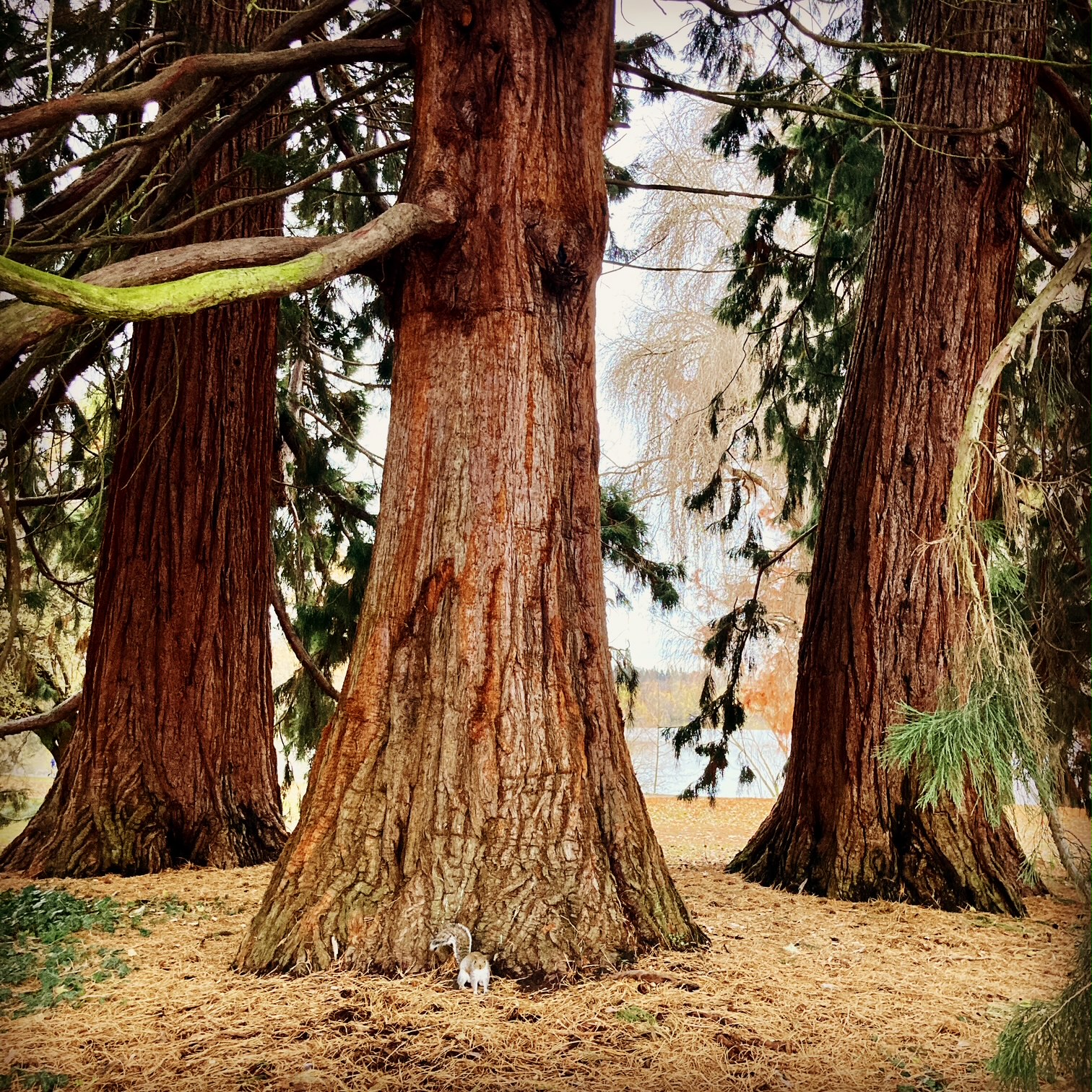We woke up to birdsong and a great big blue sky. Our morning here consists of breakfast on the rooftop and Peppa’s beautiful smile and great sense of humor. Peppa works at this B&B San Placido Inn and prepares breakfast for us in the morning. She is from Bulgaria, talks a million miles per minute in Italian, and is ever so funny. Rick is very intrigued by her since he has met very few Bulgarians and is eager to ask her questions and engage her in conversation. She is extremely friendly and has a lot to say in answer to Rick’s hungry questions. Guess who gets to be the interpreter at 8am? Ecco la!! So I listen and translate and do my best to catch up with these two eccentric minds whose ideas bounce back and forth as if in a fast-play tennis match.

And Mt Etna this morning from our rooftop breakfast. Last night’s winds chased the clouds away! You could really see the billows of cloud-like eruptions from the mountain this morning. It’s really something to see! The wind picked up again after breakfast and it was rather chilly the rest of the day. Well, it was the same temperature as Seattle. I looked. Seattle was 50 degrees and Catania reached a high of 52. People had their coats and hats on. I could see them shivering as they walked by!

The B&B has a very interesting decor: antique books on Sicily, paintings and old sketchings of Etna in eruption over the years, ships and boat collector items such as rudders, oars, nets, fishing tackle, and this “weaving”, antique cameras and puppets, typewriters and a mishmash of antiques that are fun to look at. I took this photo because this weaving reminded me of my dad. On Palm Sunday, Sicilians take the blessed palms that are handed out during mass and later, at home, they weave crosses and baskets from the crosses. My dad would take the palms we received on Palm Sunday mass and, back at home, he’d weave the most beautiful and intricate crosses for us. He’d always start out by saying, “Oh, honey…I think I may have forgotten how to make them!” And then he’d make them. They were more beautiful every year! I never learned how to do it, but it was wonderful to watch him. He told us stories as he wove these for us. Stories about his mother and about his paternal grandmother, Mamma Luigia. We kept the weavings he made for us and treated them as precious gifts until the next Palm Sunday came around.

We made a quick trip to the villa to have a meeting with the wonderful owner, Piero, and the caretakers. Very productive time. Then once back in Catania, near our B&B in the heart of the historic district, we saw this unusual shop with gigantic candles made of bees’ wax. These candles are about 6-7 feet tall and thicker than Rick’s arms! The faithful buy and use them for the annual Santa Agata’s procession. This third century saint has an interesting (and gruesome) story. Her golden statue, made of gold, used to be taken out only once a year, but after Santa Agata answered the town’s prayers by stopping a major lava flow from coming past the city palace in the 15th Century, the faithful of Catania started taking her statue out for processions twice a year. The procession in February is the one that goes on for days and has been happening annually for over 1,700 years. St. Agata had made a vow to God to never marry and to devote her life to God. When she refused to marry a man of wealth and power who had fallen in love with her, beautiful St. Agata was tortured by him. Her cruel and rejected pursuer ordered her breasts to be cut off. She then was burned alive in a pit in the center of the city for all to see. Witnesses say she didn’t burn. According to witnesses, the flames engulfed her, she died a martyr, but her pure body did not burn.
More on St. Agata’s story below and an interesting website that helps people locate where her statue is during the procession festivities:
“Saint Agatha lived during the 3rd century AD, and yet 1,700 years later the entire city stops for three days to remember a strong girl who said no to a man.”
“She was a teenager from a wealthy family who had decided to devote her life to God. When she refused the advances of a Roman prefect (Sicily was then under the rule of the Roman Empire), he had her tortured in many ways, including severing her breasts. This episode has even inspired a local sweet in the shape of breast, minne di Sant Agata (St. Agatha’s breasts).
The Feast of Saint Agatha is the most important religious festival of Catania, attracting many people from the surrounding areas and tourists – it is estimated that up to a million people line the streets of the city during the three-day festa.
“For a few days, people forget their problems, their differences, their social class and just focus on venerating Saint Agatha in an incredible mystical atmosphere. Everyone experiences the celebration in different ways, not everyone is a religious devotee, for some it is a photo opportunity.
The three-day festa has a long and busy program. It opens on February 3 with a midday procession of eleven candelore, large candle-shaped structures symbolizing the guilds, and two carriages belonging to the old local Senate with the highest religious and civil authorities of Catania. It ends in the evening in Piazza Duomo, where the St. Agatha Cathedral is located, with a fireworks display.
On the morning of the 4th, a statue of Saint Agatha holding her relics is placed on a 40,000 pound silver fercolo, or carriage, and carried around the city by devotees until it is returned to the Cathedral late at night, or, sometimes, even at dawn.
On the morning of the 5th, Mass is held at the Cathedral. Throughout the day, the reliquary bust of St. Agatha is exposed there. In the afternoon, it is taken for another procession, ending in the early morning of the 6th.
With such a long procession and so many different highlights, as a non-Catanese, how do you know where to go, what to do, what not to miss?
“Actually, this is also a problem for many of the locals. During the days of the festival, devotees wander the streets day and night in search of the saint, asking themselves, “Unni ie’ a’ Santa?”, Where is the saint? This is why to help everyone answer the question and honor St. Agatha, there is a website called Unni ie’ a’ Santa (Where is the saint?).”

A light dinner at DOC, where the kind and proud owner (and English speaking), Giuseppe, tells us that his restaurant DOC (Duomo Of Catania) is in his third month of newness. “Please tell people about me on Trip Advisor.” So I did!

I am ruined for life…a tomato will never taste the same again once I leave sun kissed Sicily

And many Sicilians have laughing eyes and a great sense of humor. We saw this sign outside a wine shop and just had to step in to talk with the owners of the shop, a young woman and her father. The father only spoke Italian and his daughter’s English was impeccable. “I’m so glad you got the pun! You know, not everyone understands my humor. Some come in and ask where the buckets for sale are! They take me LITERALLY.” Then we talked about the rain. She and her father’s hands were ice cold! If you look at a map of Sicily, there is SUN everywhere, except this evening in Catania…where we have rain. It came suddenly. We were eating at DOC (Duomo of Catania) and then suddenly we see rain. In fact, in all of Europe, in all of ITALY, there is one rain spot and it is here in Catania! Rain seems to have followed me from Seattle. And it was cold tonight. People are wearing their coats and hats. Clever vendors materialize from seemingly nowhere…”Umbrella?” Vendors from Africa, Bangladesh, and other Asian countries trying to sell us umbrellas. We laugh and tell them, “This is nothing. We are from Seattle. This is our NORMAL.” And they laugh heartily, even though they have just lost a sale.

Rain on our “Sun-Kissed-No-More-Terrace” this evening

Evening sunset from the terrace







Keep in touch,we spend a couple days in Catania with Urs and Drew,such good memories.
I.too am with you vicariously,wonderful.
Thank you, 💕💕💕
Ursula
Also, while we were eating in DOC, we saw a young man go by outside on the sidewalk. We agreed that he had to be nuts, since we could see it wasn’t raining. But sure enough, next time we looked out I saw two women go by capped by big flowers of umbrellas, covered with big wet glistening drops! The basalt street shined under the lights just blinking on.
Oops. The editor needs to edit his own writing. The man going by outside was wielding an umbrella….
I just love following your travels! Your photos and commentary are beautifully presented. So, I live vicariously!! Maybe I will join you some day?